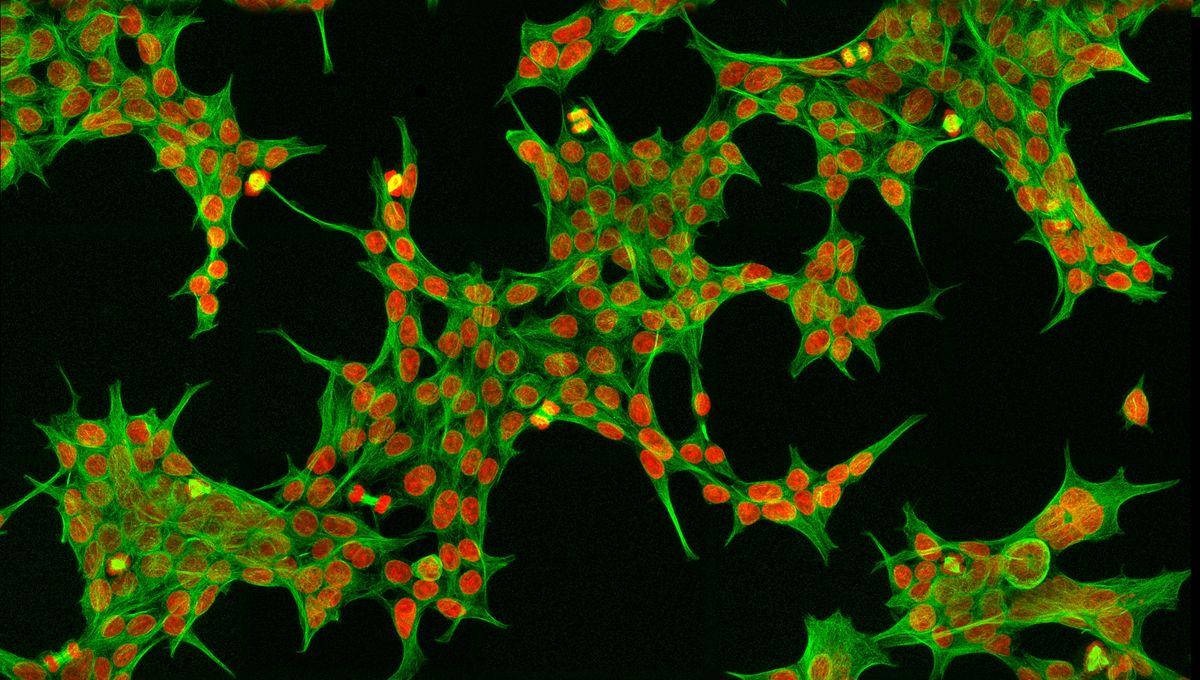Cells Outside The Brain Show Signs Of Memory And "Learning" For The First Time

Cells Outside The Brain Show Signs Of Memory And "Learning" For The First Time
Think learning and memory are all the job of the brain? You might want to think again, if the results of a recent study are to be believed. In a first, scientists at New York University (NYU) uncovered evidence of a type of learning called the massed-space effect in cells from outside the brain, suggesting that it’s not so much about the type of cells, but rather just the fact that they are cells that matters.
The study, published back in November 2024, was co-led by Nikolay Kukushkin, a Clinical Associate Professor of Life Science at NYU, who recently sat down with IFLScience for a fascinating chat about the capacity of the human memory. We also had time to learn about his latest work on extra-neuronal learning. What is an experience for a kidney cell? Dr Nikolay Kukushkin “We find that other cells – not just brain cells, but other cells in the body – store patterns of information, and they can detect differences between surprisingly fine patterns,” Kukushkin told IFLScience. “We used kidney cells and neuroblastoma cells, which are neuronal precursors but not neurons, and both of those cells work the same way. So, we believe that it’s not a property of either type of cell – it’s just a generic property of all cells.” With co-lead Professor Thomas Carew and colleagues, Kukushkin carried out experiments in the lab using two immortalized human cell lines. The cells were engineered to synthesize a fluorescent protein when a specific gene associated with memory in brain cells was switched on. “We give these cells imitated experiences,” Kukushkin explained. “What is an experience for a kidney cell? It could be signals from other cells, could be flow of nutrients, could be water that’s passing through those cells, [or] salts. Every cell is constantly bombarded with hundreds of different signals, and those signals come at specific times.” By mimicking these patterns of signals artificially in the lab, the team were able to observe that several short, spaced signals evoked a stronger response from the “memory gene” than one long signal. Nobody’s ever seen that outside the brain and neurons. Dr Nikolay Kukushkin “That in neuroscience is known as the massed-space effect, and it has been known for 100 years to be a property of any kind of memory in humans,” Kukushkin told IFLScience. Incredible though it may seem, this suggests that cells outside the brain can “learn” in a similar way to how your teachers probably made you study for tests in school. “If you’re studying for an exam,” Kukushkin continued, “the same amount of training will produce a better memory if you space it, rather than if you cram it all in one go. That’s true for humans. That’s true for any kind of animal. That’s true for cultures of neurons. But nobody’s ever seen that outside the brain and neurons.” It’s a cool finding because of the new things it teaches us about memory, but Kukushkin told us how this research could have even more fascinating implications. “Our whole body could be monitoring all the timed events that we administer, everything we eat, everything we do, on schedule. Exercise, food, medicine – all of that forms a pattern that is seen by all the different cells of our body. […] For instance, there might be some clever pattern that might teach a cancer cell to respond to a drug.” One example he gave is cancer chemotherapy. Right now, it’s mostly about giving the patient as much of the drug as they can tolerate for as long as needed to ensure the cancer cells die without killing too many healthy cells in the process. With this new research, it’s just possible that we could find a way to “hack” cellular learning by timing drugs in a specific pattern, which could even allow us to give lower doses with less toxicity. And what if the same could apply to something like nutrition? “Maybe the sequence of nutrients that you consume matters. Maybe the gap between those nutrients matters, and that might change how we digest food in the future, how we store fat, for example,” Kukushkin suggested. This is all still firmly in the realms of the theoretical, but it raises some intriguing questions. In the future, the authors explain in their paper, they plan to study memory as a product of cell signaling in a whole organism – like Aplysia, the sea slugs that have played an outsized role in this field of study over the years. “I worked with sea slugs,” Kukushkin told IFLScience. “I think it’s a lot easier to make the leap from the memory of a sea slug to the memory of a kidney cell [than to] my memory. We know there’s no debate that all those memories are part of the same process, that they evolutionarily came from the same place. They’re built on the same components. They’re doing the same thing.” The study is published in Nature Communications.


